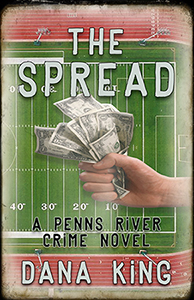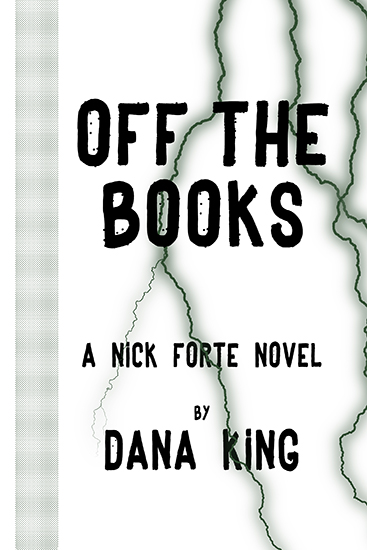It’s always fun to post rules for writing, if only to see how righteous the indignation becomes from those who don’t believe writing has any rules. If posting such rules riles your innards, think of them as guidelines, much the way New York drivers think of red lights.
When posting rules, it’s always good to get them from someone who knows what he’s talking about. Allan Guthrie is a kick-ass writer, though he has recently shuffled toward the dark side by becoming one of those gatekeepers all unpublished authors know is preventing them from finding the fame and fortune their writing deserves by keeping his jackboot firmly on their throats so his cronies can reap the rewards of literary success without competition. (Harumpf.) A few years ago, Mr. Guthrie took time off from smothering writers’ dreams in their cribs to publish a white paper he called, “Hunting Down the Pleonasms.” (Why someone in a field so intent on invoking the miscarriage of writers’ aspirations would take the time to share some of what has made him successful is beyond me. Must be part of the Gatekeepers’ Conspiracy I’m not clever enough to figure out.)
Anyway, Mr. Guthrie gave Adventure Books permission to reprint the document at its discretion. (See? The Inner Circle, working together.) I stumbled onto it there, after being directed from Facebook. Rarely have I seen so much good advice so well put, so I’m sharing it here, with a bow in the direction of the Adventure Books web site, and, of course, Allan Guthrie.
'Hunting Down the Pleonasms'
I can’t stress strongly enough that writing is subjective. We all strive for different goals. Consequently, we all need our own set of rules—and some of us don’t need rules at all! Personally, I like rules. If nothing else, it’s fun breaking them.
1: Avoid pleonasms. A pleonasm is a word or phrase which can be removed from a sentence without changing its meaning. For example, in “Hunting Down The Pleonasm”, ‘down’ is pleonastic. Cut it and the meaning of the sentence does not alter. Many words are used pleonastically: ‘just’, ‘that’ and ‘actually’ are three frequently-seen culprits (I actually just know that he’s the killer can be trimmed to I know he’s the killer), and phrases like ‘more or less’ and ‘in any shape or form’ are redundant.
2: Use oblique dialogue. Try to generate conflict at all times in your writing. Attempt the following experiment at home or work: spend the day refusing to answer your family and colleagues’ questions directly. Did you generate conflict? I bet you did. Apply that principle to your writing and your characters will respond likewise.
3: Use strong verbs in preference to adverbs. I won’t say avoid adverbs, period, because about once every fifty pages they’re okay! What’s not okay is to use an adverb as an excuse for failing to find the correct verb. To ‘walk slowly’ is much less effective than to ‘plod’ or ‘trudge’. To ‘connect strongly’ is much less effective than to ‘forge a connection’.
4: Cut adjectives where possible. See rule 3 (for ‘verb’ read ‘noun’).
5: Pairs of adjectives are exponentially worse than single adjectives. The ‘big, old’ man walked slowly towards the ‘tall, beautiful’ girl. When I read a sentence like that, I’m hoping he dies before he arrives at his destination. Mind you, that’s probably a cue for a ‘noisy, white’ ambulance to arrive. Wailingly, perhaps!
6: Keep speeches short. Any speech of more than three sentences should be broken up. Force your character to do something. Make him take note of his surroundings. Ground the reader. Create a sense of place.
7: If you find you’ve said the same thing more than once, choose the best and cut the rest. Frequently, I see the same idea presented several ways. It’s as if the writer is saying, “The first couple of images might not work, but the third one should do it. If not, maybe all three together will swing it.” The writer is repeating himself. Like this. This is a subtle form of pleonasm.
8: Show, don’t tell. Much vaunted advice, yet rarely heeded. An example: expressing emotion indirectly. Is your preferred reader intelligent? Yes? Then treat them accordingly. Tears were streaming down Lila’s face. She was very sad. Can the second sentence be inferred from the first? In context, let’s hope so. So cut it. If you want to engage your readers, don’t explain everything to them. Show them what’s happening and allow their intelligence to do the rest. And there’s a bonus to this approach. Because movies, of necessity, show rather than tell, this approach to your writing will help when it’s time to begin work on the screenplay adaptation of your novel!
9: Describe the environment in ways that are pertinent to the story. And try to make such descriptions active. Instead of describing a book lying on a table, have your psycho-killer protagonist pick it up, glance at it and move it to the arm of the sofa. He needs something to do to break up those long speeches, right?
10: Don’t be cute. In the above example, your protagonist should not be named Si Coe.
11: Avoid sounding ‘writerly’. Better to dirty up your prose. When you sound like a writer, your voice has crept in and authorial intrusion is always unwelcome. In the best writing, the author is invisible.
12: Fix your Point Of View (POV). Make it clear whose head you’re in as early as possible. And stay there for the duration of the scene. Unless you’re already a highly successful published novelist, in which case you can do what you like. The reality is that although most readers aren’t necessarily clued up on the finer points of POV, they know what’s confusing and what isn’t.
13: Don’t confuse the reader. If you write something you think might be unclear, it is. Big time. Change it or cut it.
14: Use ‘said’ to carry dialogue. Sid Fleischman calls ‘said’, “the invisible word.”
15: Whilst it’s good to assume your reader is intelligent, never assume they’re psychic.
16: Start scenes late and leave them early.
17: When writing a novel, start with your characters in action. Fill in any necessary backstory as you go along.
18: Give your characters clear goals. Always. Every scene. And provide obstacles to those goals. Always. Every scene. If the POV character in a scene does not have a goal, provide one or cut the scene. If there is no obstacle, add one or cut the scene.
19: Don’t allow characters who are sexually attracted to one another the opportunity to get into bed unless at least one of them has a jealous partner.
20: Torture your protagonist. It’s not enough for him to be stuck up a tree. You must throw rocks at him while he figures out how to get down.
21: Use all five senses in your descriptions. Smell and touch are too often neglected.
22: Vary your sentence lengths. I tend to write short, and it’s amazing what a difference combing a couple of sentences can make.
23: Don’t allow your fictional characters to speak in sentences. Unless you want them to sound fictional.
24: Cut out filtering devices, wherever possible. ‘He felt’, ‘he thought’, ‘he observed’ are all filters. They distance the reader from the character.
25: Avoid unnecessary repetition of tense. For example: I’d gone to the hospital. They’d kept me waiting for hours. Eventually, I’d seen a doctor. Usually, the first sentence is sufficient to establish tense. I’d gone to the hospital. They kept me waiting for hours. Eventually, I saw a doctor.
26: When you finish your book, pinpoint the weakest scene and cut it. If necessary, replace it with a sentence or paragraph.
27: Don’t plant information. How is Donald, your son? I’m quite sure Donald’s father doesn’t need reminding who Donald is. Their relationship is mentioned purely to provide the reader with information.
28: If an opinion expressed through dialogue makes your POV character look like a jerk, allow him to think it rather than say it. He’ll express the same opinion, but seem like a lot less of a jerk.
29: Characters who smile and grin a lot come across as deranged fools. Sighing and shrugging are also actions to avoid. Eliminating smiles, sighs and shrugs is almost always an improvement. Smiling sadly is a capital offence.
30: Pronouns are big trouble for such little words. The most useful piece of information I ever encountered on the little blighters was this: pronouns refer to the nearest matching noun backwards. For example: John took the knife out of its sheath and stabbed Paul with it. Well, that’s good news for Paul. If you travel backwards from ‘it’, you’ll see that John has stabbed Paul with the sheath! Observing this rule leads to much clearer writing.
31: Spot the moment of maximum tension and hold it for as long as possible. Or as John D. MacDonald put it: “Freeze the action and shoot him later.”
32: If something works, forget about the rule that says it shouldn’t




4 comments:
I think those rule. are spot on
Good post, Dana. Something we can all learn from.
Thanks for the mention, Dana. It's about time I updated this, I think. I'm sure I have a few more pointers that might be useful.
This was perfectly times, just as I had started a new draft of the WIP. I thought it was tight before, but with these suggestions in mind, I cut another thousand words and didn;t lose a thing.
Post a Comment